891 Search Results for core vocabulary
May 11, 2015
by Carole Zangari -
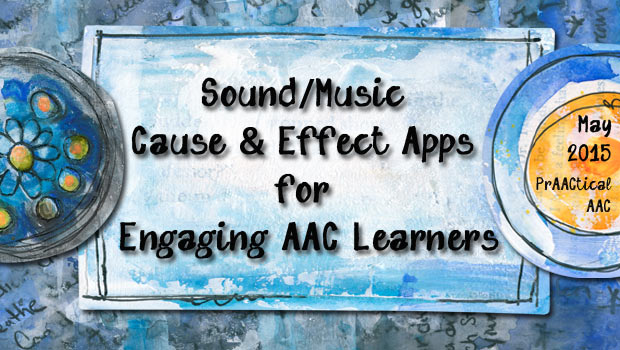
AAC clinicians are a creative bunch. Recently, I had the opportunity to visit some colleagues and was excited to see how they are repurposing free/low cost apps to build engagement and interaction in learners with significant communication challenges. Many of us work with learners who are highly motivated by mobile devices and apps that make music or sound, but still have a way to go to build their skills in using them. For some, we find that using apps that are relatively simple and easy (both motorically and cognitively), can spice up a session. Here are some sound/music cause and effect apps to explore. Of course, these apps are intended for a purpose completely different than how we are using them in therapy. Nonetheless, kids love them and that means that we SLPs can get a lot of mileage out of using apps like these in our therapy sessions. Burp... [Read More...]
May 10, 2015
by Carole Zangari -
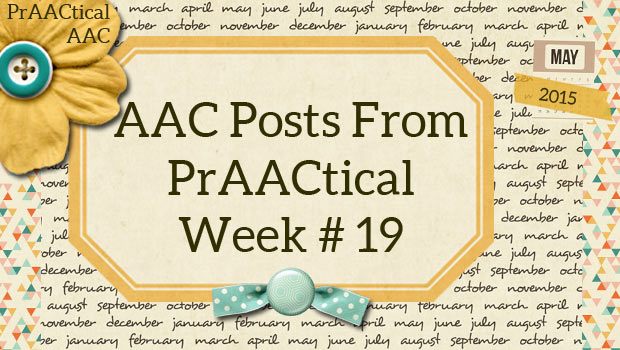
Monday – Core Vocabulary Resources for May Tuesday – How I Do It: Classroom Support for Students with AAC Needs by Tina Moreno Wednesday – Video of the Week: Multimodal Communication in the Classroom Thursday – PrAACtically Reading: The Cat in the Hat with Karen Natoci
May 7, 2015
by Carole Zangari -

Who doesn’t love reading books by Theodor Seuss Guisel? Michigan-based SLP Karen Natoci is back to show us how she is using one of his most beloved books to integrate language and literacy instruction with the AAC learners in some of the classrooms she serves. Be sure to download her lesson plan and watch the video clip of Karen in AACtion. Enjoy! :::::::::::::::::::::::::::::::::::::::::::::::::::::::::::::::::::::::::::::: CLASSIC Book: The CAT in the HAT, by Dr. Seuss Core Vocabulary focus: LOOK, NOT, LIKE, NOT LIKE, NO, GO, DO, UH-OH or OOPS. COMMUNICATION Matrix Level: I-VII Four Block focus: Shared Reading and Working with Words (at the alphabet/rhyme level) ————————————————————————————————————————————- It is Spirit Week at our school and Monday is Hat DAY!! What better excuse to read, The Cat in the Hat!! The rhythm of the reading along with the site of all of our wacky hats made for a fun morning in room 8!... [Read More...]
April 30, 2015
by Carole Zangari -
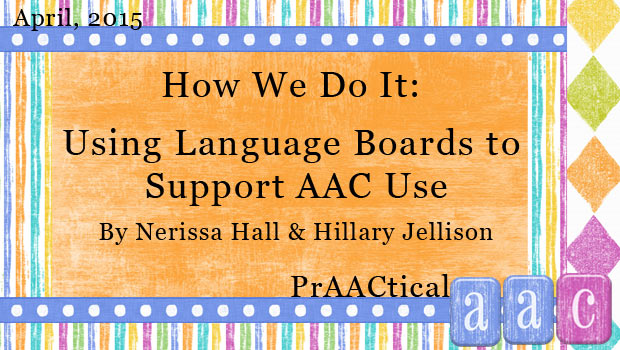
Many of you have reached out to say how much you’ve appreciated the prAACtical suggestions provided by Nerissa Hall and Hillary Jellison, New England-based SLPs and owners of Commūnicāre, LLC. We’re excited to have them back, especially because they are talking about something near and dear to our hearts: Implement a core vocabulary approach in their AAC therapy. In this post, they give us a peek into the ‘why’ and ‘how’ of making and using communication boards that are rich in core words. In their typically generous fashion, they also share templates for the boards that they make. How We Do It: Using Language Boards to Support AAC Use There are a number of different strategies one can use to support an individual’s use of augmentative and alternative communication (AAC). We know that aided language stimulation, augmented input, and AAC modeling are important and effective ways of supporting AAC use. By using... [Read More...]
April 23, 2015
by Carole Zangari -
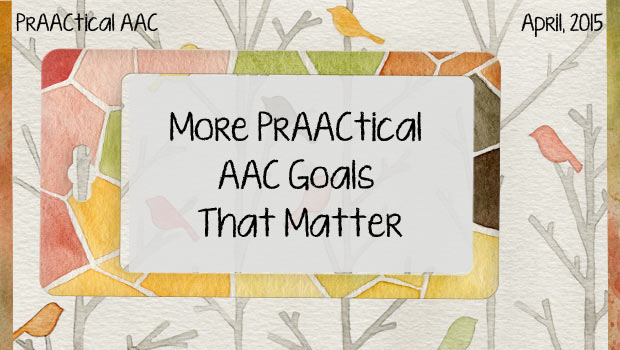
While we may play a variety of roles, a commonality among those of us on teams serving individuals with AAC needs is that we often struggle with developing goals that are meaningful. Let’s work together to develop a list of potential goals that we can reflect on as we work with our clients and their families on a plan for becoming more competent communicators. There are two sections in this post: Qualifiers (for information applying to all goals) and Goal Areas (for actual goals). This is not meant to be a comprehensive list but rather a starting point for a collaborative document. Please join the effort by adding goals in the comment area below or reaching out using our contact form. SECTION 1: QUALIFIERS Each goal can be prefaced with a description of the communicator’s AAC system or the elements of that system can be named. Terms used in this document... [Read More...]
April 16, 2015
by Carole Zangari -
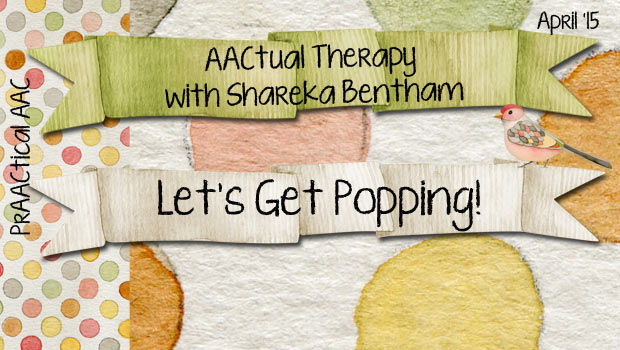
We are headed to Barbados with this post, to hear how SLP Shareka Bentham and her prAACtical friends are making popcorn and building language skills. You can see Shareka’s earlier posts here. I love the ease and versatility of this activity which could be a fun way for AAC learners to practice core vocabulary with a manual communication board/book, SGD, or PODD book. :::::::::::::::::::::::::::::::::::::::::::::::::::: I revisited this activity this week and thought that it would be a great one to share. It’s fun, functional and filling! What more do you need? Making popcorn together is not only one of the best group activities I’ve done, it’s also one of the most fun, and interactive AAC activities I’ve done. It’s a chance to learn and use new vocabulary, take turns using the AAC device and to do some requesting and describing. Initially, when I worked on this activity I only used a... [Read More...]
April 6, 2015
by Carole Zangari -
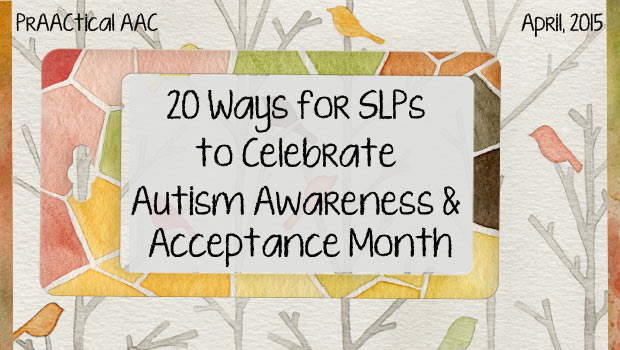
As SLPs, we know a good deal about autism spectrum disorders. Nevertheless, there’s always some new area to explore. Here are some ideas. Learn about and from self-advocates with ASD. Get inspired to learn more about video modeling and self modeling. Enroll in a MOOC (Massive Open Online Course) on Autism, like this one by Swinburne University of Technology. Learn more about what makes a narrative a social story as opposed to something else by reviewing the guidelines for sentence types. Take a ‘real look’ at a speech-language therapy session where the focus is coaching a family member to build play and interaction skills. Learn more about the neurodiversity and the neurodiversity movement. Share some of the empirical supports for AAC use. Learn more about DSM 5. Take a ‘real look’ at a family whose child has Down Syndrome and autism. Renew your commitment to theoretically sound and empirically supported... [Read More...]
April 5, 2015
by Carole Zangari -
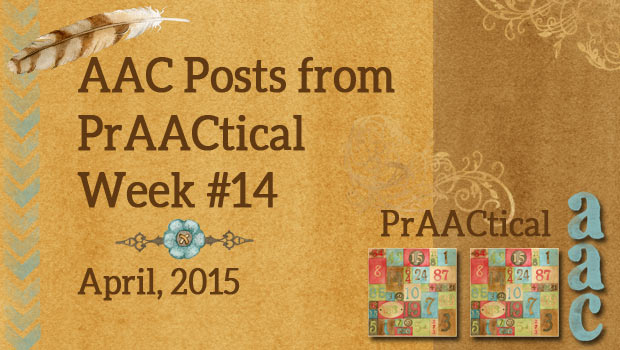
Monday – PrAACtically April: A Month of Core Tuesday – Core Vocabulary Resources for April Wednesday – Video of the Week: AAC and ASD Thursday – How I Do It: Making a Back-up for High Tech AAC by Jeanne Tuthill Friday – Beyond World Autism Day
March 22, 2015
by Carole Zangari -
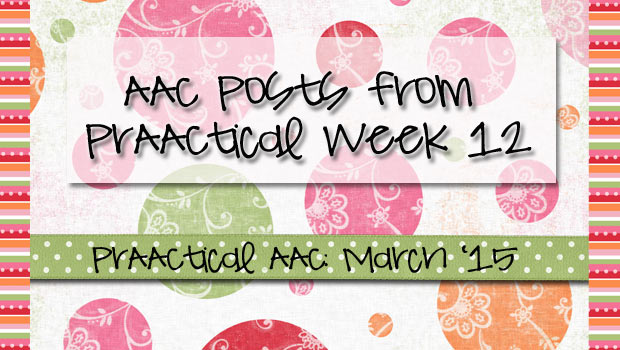
Monday: Core Concepts in Core Vocabulary Instruction Tuesday: PrAACtical Questions: “What Should I Program on the AAC Device?” Wednesday: Watch It Wednesday – AAC Goes to the Library Thursday: Make It PrAACtical: Mounting Board for a Walker
March 17, 2015
by Carole Zangari -
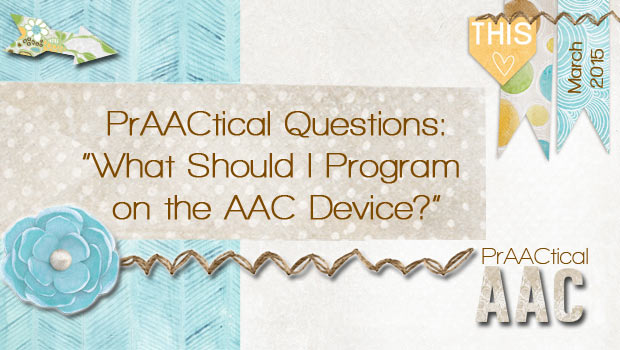
“My client has a new SGD and will begin bringing it to school. What words should I program on it?” We are so fortunate to be practicing at a time when the high tech SGDs and robust AAC apps come pre-loaded with lots of vocabulary. Still, when you sit down to prepare the device for an actual client, it can be hard to determine what needs to be there right away and what can wait. You’ll find lots of forms and checklists floating around, some for children and some for adults. There are lots of right ways to do this. In making these decisions, I typically run through a mental checklist of a few categories, thinking both about single words and longer messages. Single Words Core Vocabulary: In most cases, we’ve selected an AAC tool that has ample core words to choose from. Use what you know about normal language development... [Read More...]









